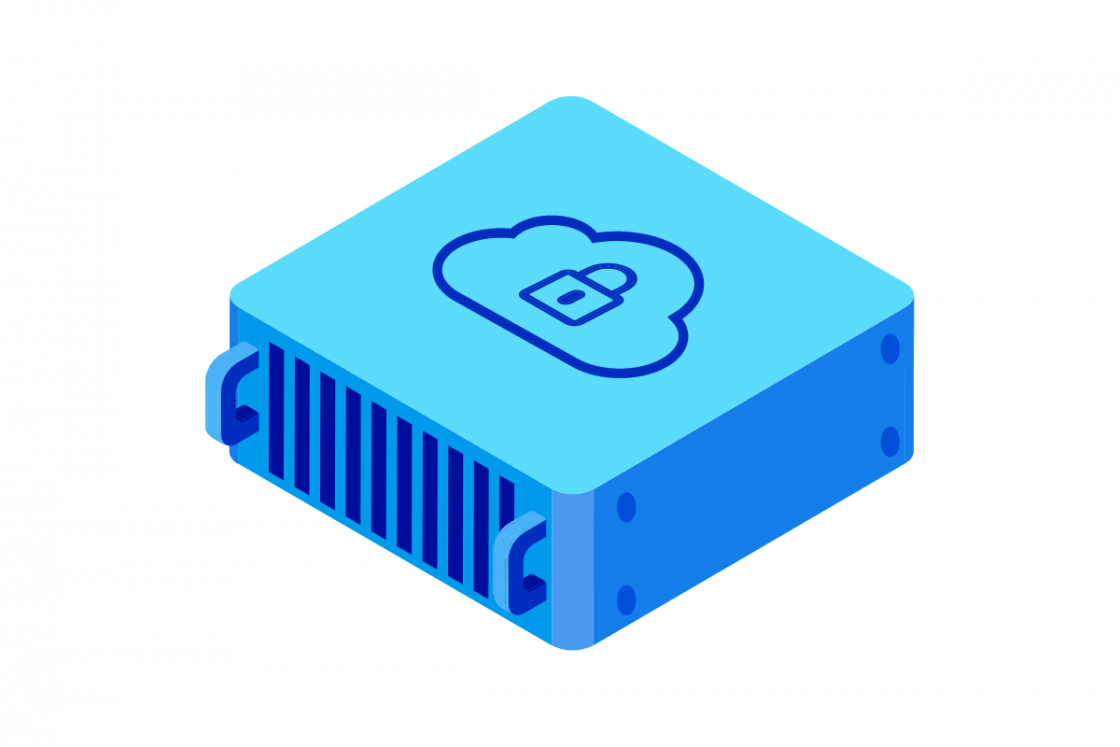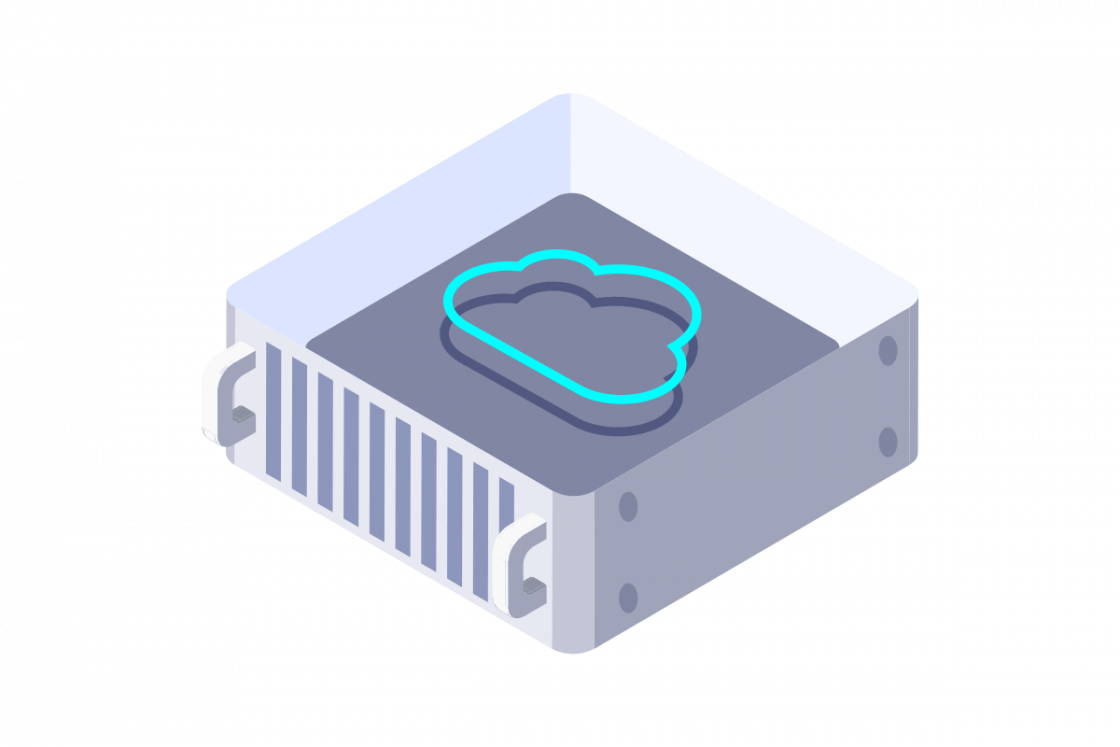What is AI Inference?
Artificial intelligence (AI) is rapidly changing the world around us. From personalised recommendations on our favourite streaming services to self-driving cars navigating complex traffic, AI is powering a new generation of intelligent applications.
But how do these systems think and make decisions? The key lies in a process called AI inference.
It's important to remember that inference is the ultimate goal of building an AI model. While training is a crucial step, inference – to make accurate predictions on new, unseen data – signifies the completion of an AI project.

What does AI inference mean?
AI inference is using a trained AI model to make predictions or decisions. First, an AI model is fed a large dataset of information, which can include anything from images and text to audio and sensor readings.
The model analyses this data, learning to identify its patterns and relationships. This learning stage is called training. Once trained, the model can be presented with new, unseen data.
Based on the patterns it learned during training, the model can then make predictions or decisions about this new data. For example, a model trained on a massive dataset of text can then generate human-like text when given a prompt.
You might not always "see" AI inference directly. Instead, you often experience it through applications like web apps, APIs, or chatbots. These interfaces provide a user-friendly way to interact with the AI model, while the actual inference process happens behind the scenes.
The Process of Inference
The AI inference process typically involves a few key steps:
- Input: New data is fed into the trained AI model. This data could be an image, a sentence, a sound clip, or any other information the model is designed to handle.
- Processing: The model analyses the input data based on the patterns it learned during its training phase. It might compare the input to known examples, extract relevant features, or apply complex mathematical calculations.
- Output: Based on its analysis, the model generates a prediction, classification, or decision. This could be anything from identifying an object in an image to translating a sentence to predicting the likelihood of an event.
For example, an AI model trained to detect fraudulent credit card transactions might take transaction details (amount, location, time, etc.) as input, analyse these details for suspicious patterns, and then output a prediction—"fraudulent" or "not fraudulent."
Essentially, AI inference is putting an AI model's knowledge into action, allowing it to solve real-world problems and make intelligent decisions.
Machine Learning Models
AI inference relies heavily on machine learning models, algorithms that allow computers to learn from data without explicit programming. These models are the "brains" behind AI systems, enabling them to recognise patterns, make predictions, and perform complex tasks.
Training Models
Before an artificial intelligence model can infer, it needs to be trained. This involves feeding the model a massive amount of data and allowing it to learn the underlying patterns and relationships. Think of it like studying for an exam—the more you study (or, the more data the model is trained on), the better you perform on the test (or, the more accurate the model's predictions).
During training, the model adjusts its internal parameters to minimise errors and improve accuracy. This process often involves complex mathematical optimisation techniques and can take considerable time and computational resources, especially for large and complex models.
You don't always have to start from scratch. Many powerful pre-trained models are readily available, often through open-source platforms. These models have already been trained on massive datasets and can be fine-tuned for specific tasks or deployed directly for inference – through .
Types of Learning
Machine learning models can be trained using different approaches, each suited for different types of tasks and data:
- Supervised learning involves training a model on labelled data, where each data point is associated with a known output or label. For example, a model trained to recognise cats in images would be fed images labelled as "cat" or "not cat." The model learns to map inputs to outputs based on this labelled data.
- Unsupervised learning: This involves training a model on unlabeled data to discover hidden patterns or structures. For example, a model might group customers into different segments based on their purchasing behaviour.
- Reinforcement learning: This involves training a model through trial and error, where it learns to take actions in an environment to maximise a reward. For example, a model controlling a robot might learn to navigate a maze by receiving rewards for reaching the goal and penalties for hitting obstacles.
The choice of learning approach depends on the specific application and the available data for your AI solutions. Each type of learning has its strengths and weaknesses, and researchers are constantly developing new and improved techniques.
Note that just like training, AI inference requires computing power. The complexity of the model, the size of the input data, and the desired speed of inference all influence the computational resources needed. While GPUs are often preferred for their parallel processing capabilities, CPUs can also be used, especially for less demanding tasks.
Deep Learning and Artificial Intelligence
While traditional machine learning models have existed for decades, recent advancements in deep learning have significantly expanded AI's capabilities. Deep learning models are inspired by the structure and function of the human brain, using an artificial neural network with multiple layers to process information hierarchically.
This allows them to learn complex patterns and representations from vast amounts of data, leading to breakthroughs in various AI applications.
The impact of AI, particularly deep learning, is evident across numerous industries and applications. In healthcare, AI is used to diagnose diseases more accurately, develop new drugs and treatments, personalise treatment plans for individual patients, and improve overall patient care.
Data Processing for Inference
While training an AI model is crucial, efficient data processing is essential for successful AI inference. This involves preparing and transforming the input data into a format that the model can understand and use to generate accurate and timely predictions.
Real-time inference
Many AI applications require real-time inference, where the model needs to process data and generate predictions instantaneously. This is particularly important in applications like:
- Autonomous vehicles: Self-driving cars rely on real-time inference to process sensor data (cameras, lidar, radar) and make split-second decisions to navigate safely. Delays in inference could lead to accidents.
- Fraud detection: Real-time inference is crucial for identifying fraudulent transactions as they occur, preventing financial losses and protecting users.
- High-frequency trading: In financial markets, milliseconds matter. AI models must analyse market data and execute trades in real-time to capitalise on opportunities.
To achieve real-time inference, efficient data pipelines are needed to handle the continuous influx of data, perform necessary preprocessing steps (cleaning, formatting, feature extraction), and feed the processed data to the model with minimal latency.
Cloud-Based Inference Models
Cloud computing has become increasingly important for AI inference, especially for applications that require scalability and high availability. Cloud platforms offer several advantages:
- Scalability: Cloud resources can be easily scaled up or down based on demand, allowing AI systems to handle fluctuating workloads and accommodate growing data volumes.
- Accessibility: Cloud-based inference models can be accessed from anywhere with an internet connection, enabling deployment across various devices and locations.
- Cost-effectiveness: Cloud platforms offer pay-as-you-go pricing models, allowing users to pay only for the resources they consume, which can be more cost-effective than maintaining on-premises infrastructure.
- Specialized Hardware: Cloud providers offer access to specialised hardware like GPUs and TPUs, which are optimised for AI workloads and can significantly accelerate inference.
By leveraging cloud-based inference models, businesses and developers can deploy and scale AI applications more efficiently, reduce infrastructure costs, and focus on developing innovative solutions.
OVHcloud and AI inference
Accelerate your AI journey with OVHcloud's comprehensive suite of tools. Whether you're just starting with machine learning or deploying complex models in production, we provide the high-performance infrastructure and user-friendly services you need to succeed:

AI Endpoints
A serverless AI inference service that provides seamless access to well-known open-source and industry-leading AI models without requiring AI expertise or dedicated infrastructure. It offers standardized APIs, high-speed inference, enterprise-grade security with no data retention, and a playground for interactive model testing.

AI Deploy
OVHcloud AI Deploy efficiently deploys and manages your AI models. It simplifies the process of getting your models into production. You can easily deploy models as APIs, integrate them into your applications, and monitor their performance.

AI Training
Scale your machine learning training jobs with high-performance infrastructure. OVHcloud AI Training offers a range of customisable instances tailored for demanding AI workloads. Leverage the latest GPUs and fast interconnects to accelerate your training process and reduce time to market.

AI Notebooks
Launch Jupyter Notebooks in the cloud with a few clicks. OVHcloud AI Notebooks provide a fast and easy way to start with machine learning. Pre-configured with popular frameworks and libraries, you can spin up a notebook instance with powerful GPUs in minutes. Focus on building and training your models, not managing infrastructure.